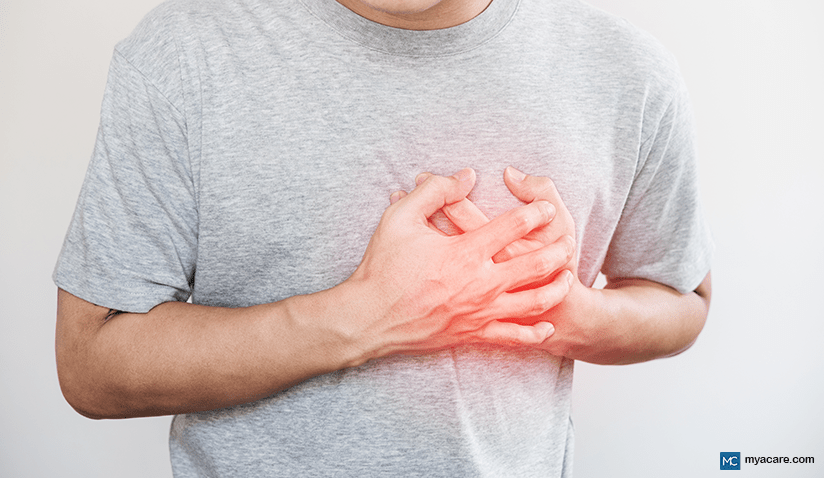COMMON TYPES OF NEURO DISEASES - PART 5 - SECONDARY NEUROLOGICAL SYNDROMES

In continuation of our series on Neurological Disease, here is the next segment on Secondary Neurological Syndromes. This segment covers:
- Headache disorders
- Neuropathic Pain
- Bell Palsy
- Ataxia and Cerebellar Ataxia
Secondary Neurological Syndromes
The following clinical conditions are common symptoms of neurological disorders but may also spontaneously occur as temporary standalone conditions. None of them are diseases within their own right but constitute clusters of neurologic symptoms.
Headache disorders
Headaches are common symptoms of many illnesses and conditions; however they can also constitute stand-alone disorders of their own. These are known as primary headaches disorders. Chronic migraines have gotten the most scientific attention in recent years, yet tension headaches and chronic daily headaches are the most common headache syndromes affecting the population worldwide.
Types include:
- Migraines
- Tension-type headaches
- Cluster headaches
- Medication-overuse headaches
The underlying mechanisms for many headache disorders are not known. It is speculated that migraines are caused by the over-production of pain-related chemicals in the brain and that tension headaches are a result of musculoskeletal problems or stress, both physical and emotional. Women are also generally more susceptible than men to headaches for reasons regarding menstruation and hormonal fluctuations. Headaches may present as episodic, occurring in bouts that last for several weeks every year or second year. They may also present as chronic, occurring daily for long periods of time.
Medication-overuse headaches tend to develop from treating another type of chronic headache disorder. The chronic excessive use of painkillers and other medications to treat the headache symptoms gives rise to a chronic daily headache disorder of its own. Naturally this is a catch 22, as daily headaches lead to greater medication intake which leads to worse headaches.
Secondary headache disorders can arise due to a temporary condition such as head or neck injuries, infections, allergies (e.g. pollen), high levels of stress and drug use or withdrawal. Neuropathic pain (described below), cerebrovascular conditions and any disease that affects the eyes, nose, ears, sinuses, teeth, mouth or other parts of the cranium can also result in chronic headaches.
Symptoms
All headaches present with some type of pain in the cranium, with different types of headaches presenting with different underlying causes, pain and intensities.[1]
- Migraines tend to be one of the most severe types of headache and usually last for 2-3 days. These headaches are typically felt as one-sided and pulsating. Many experience extreme sensitivity toward light and sound, which is typically accompanied by nausea and intensified through activity.
- Tension-type headaches also tend to be episodic, lasting no more than a few hours. In rare cases, they may last a few days. This type of headache is usually mild to moderate, a generalized feeling throughout the head and the result of muscle stiffness.
- Cluster headaches are short-lived but very severe. Headache onset classically begins with one-sided eye pressure and pain. While the headaches themselves last for 30-60minutes on average, they tend to occur daily (sometimes multiple times a day) for periods of 6-12 weeks – i.e. in clusters. Headache intensity is worse at night and patients with cluster headaches tend to be unable to sit still with the pain.
Risk Factors
Headaches can be caused by a wide variety of triggers and there are many conditions that can exacerbate the risk of their chronic occurrence. Some of these include[2]:
- Muscle stiffness or tension
- Stress, anxiety or mood disorders
- Vascular conditions
- Hormonal conditions
- Drug abuse
- Head injury
- Ischemia or stroke
- Brain inflammation or swelling
- Bruxism (teeth grinding, generally during sleep)
- Bad posture
- Fasting
- Smoking
- Alcohol
- Caffeine
- Food additives such as aspartame
- Over or under sleeping
- Obesity
- Travel or sudden environmental changes, such as in altitude, weather, season, temperature or time-zone
Treatment Options
If a headache disorder is caused by something treatable, such as a problematic tooth, pollen allergies or overuse of medications, then treating these conditions will likely treat the headaches as well.
Over-the-counter painkillers are the first port of call for most headache disorders. In migraines, pain may be lessened if painkillers are taken early during onset, otherwise gastric perturbations prevent proper absorption of medications.
Tension-type headaches may be prevented with the help of physical interventions such as exercise, which loosen up the muscles and lower stiffness. Stress management, relaxation techniques or cognitive therapy may also be of use for other headache disorders.
If headaches cannot be managed with over-the-counter medications, a specialist ought to be consulted.
Neuropathic Pain
Neuropathic pain is pain derived either directly or indirectly from a neurological condition.[3]
Unlike pain that is derived from the acute activation of pain receptors in nerves (nociceptive pain), such as from physical injury; neuropathic pain refers to a problem within the nervous system that results in chronic pain and/or increased sensitivity to pain. It is often the result of a lesion or some other disease-related process at sites in the brain or spinal cord that coordinate sensory pain perception (the somatosensory system). Neurotransmitter imbalances, nerve damage, metabolic dysfunction that affects the nerves and ischemia are common superficial causes of neuropathic pain, as are muscle spasticity, rigidity and joint deformities.
Neuropathic pain is known as peripheral or central, depending on whether it occurred within the peripheral or central nervous systems. Neuralgia[4], common to some infections like shingles, and neuropathies[5], as seen in diabetes, describe different types of neuro conditions in which neuropathic pain often (but not always) manifests.
Those with neuropathic pain may also experience pain in reaction towards a non-painful stimuli, such as light exposure or gentle touch. The pain is generally localized to a specific body area in relation to the specific nerves being affected.
Symptoms
The first symptom of neuropathic pain is chronic pain that does not go away. Other symptoms may include:
- Depression, anxiety and other mood disorders
- Irritability
- Numbness or tingling in the extremities
- Reduced cognition
- Increased sensitivity to painful stimuli
- Pain sensitivity felt towards non-painful stimuli
- Debilitating pain that affects daily functionality
Neuropathic pain may result in ion channel imbalances in nerve cells, which may serve to exacerbate the symptoms.
Risk Factors
Here are a few common risk factors for neuropathic pain:
- Neuronal metabolic impairments
- Neurotransmitter imbalances
- Cerebrovascular conditions
- Traumatic injuries
- Trauma and PTSD
- Substance abuse
- Chronic severe stress
- Pre-existing mood disorders
- Neurological infections
- Metabolic dysfunction affecting the nerves, as seen in diabetes
- Chronic neuroinflammation
- Chronic sleep deprivation
- Excessive neuronal excitotoxicity
Treatment Options
In many cases of neuropathic pain, treating an underlying condition does not improve pain-related symptoms. Therefore treatment is largely aimed at targeting symptoms of neuropathic pain, rather than known or potential causes. Unlike usual types of pain, those with neuropathic pain do not respond to conventional pain killing medications, including NSAIDS, pharmaceutical opioids and other analgesics.
A combination of conventional treatments and complementary therapies are often used to try to treat the pain, in accordance with other symptoms such as mood disorders. Neuro-modulating drugs may be prescribed, such as anti-epileptic drugs or neurotransmitter re-uptake inhibitors (a class of antidepressants). Electrical nerve stimulation, specialized exercises and/or topical pain-relievers may also be used where appropriate.
For those with chronic pain that is debilitating, cognitive behavioral therapy may help to retain some daily functionality.
If pain persists and no therapy is working, a physician may suggest a medical procedure that blocks nerve conductance and puts an end to the pain manually, such as botox injections. Novel treatments that are being currently studied for neuropathic pain include stem cell treatments and sodium channel blockers.
Bell Palsy
Bell Palsy is a condition in which half the muscles in the face tend to droop from partial or complete weakness. It can form as a symptom set as a result of a neurological disease (especially infection based disease) or as a standalone health condition of an unknown cause.[6]
The incidence of Bell Palsy is roughly 15-20 people per 100 000. Of these people, 8-12% can expect the recurrence of Bell Palsy.
Symptoms
The main symptom is drooping of the muscles in one half of the face, resulting in a warped appearance and either partial or total loss of control of those muscles.
This may manifest additionally with changes to sensory perception, such as sound sensitivity and taste alterations. Bell Palsy may also cause the eyes to be runny or induce excessive salivation.
Risk Factors
General risk factors for Bell Palsy include:
- Increased risk at older ages
- Head injuries or trauma
- Brain tumors
- Birth defects
- Autoimmune conditions
- Neurotropic infections
- Diabetes
- Obesity
- Pregnancy and preeclampsia
- Hypertension
Treatment Options
Treatment is typically dependent on the Bell Palsy diagnosis and whether it was caused by a disease or not. Corticosteroids, antiviral medications or a combination of the two may be prescribed by a healthcare practitioner for Bell Palsy.
Ataxia and Cerebellar Ataxia
Ataxia is a neurological sign constituted by lack of coordination in muscle movements of the body. It belongs to a wide spectrum of neurological diseases and may also occur spontaneously without a known cause. Individuals can also be susceptible to getting ataxia through genetic inheritance.[7] Any ataxia may arise as a result of injury, disease, ischemia, poisoning, or some other unknown inflammatory process.
An example of a specific form of ataxia would be cerebellar ataxia which is caused by damage in the cerebellum. The cerebellum is in charge of coordinating physical movements, such as walking and components of hand-eye coordination. [8]
Symptoms
The classic symptoms of ataxia include slowness or problems with movement that generally results in difficulties with walking.
Other symptoms may include:
- Tremors
- Dizziness
- Vertigo
- Nausea
- Vision abnormalities, such as spastic eye movements
- Trouble moving or coordinating limbs, particularly for fine hand movements such as writing by hand or buttoning a shirt
- Bad posture
- Lack of balance and clumsiness
- Slurred speech
- Trouble swallowing
Severe complications can cause pain, blood pressure abnormality, respiratory distress and choking, excessive muscle rigidity, urinary troubles, sexual dysfunction and may even be fatal.
Risk Factors
Risk factors for ataxia include:
- Acute toxicity, poisoning or radiation damage
- Head injury, ischemia or stroke
- Demyelinating diseases
- Brain tumors and malformations
- Neurological infections
- Autoimmune conditions
- Hypothyroidism
- Certain substances such as alcohol, antidepressants and antiepileptic drugs
- Coeliac disease predisposes one to ‘gluten ataxia’
- Arnold-Chiari malformation
- Wilson disease
- Hereditary conditions, such as Friedreich ataxia, ataxia-telangiectasia, and fragile X associated ataxia
- Vitamin B12 deficiency
Treatment Options
There are no known treatment options for ataxia. If the ataxia is being caused by something that can be diagnosed, such as hypothyroidism or acute poisoning, then treating these underlying conditions tends to help with symptoms of ataxia. Not all forms of ataxia are reversible, even if the cause is known and being treated.
Sana Hospital Group is one of the largest independent healthcare providers in Germany. With over 50 world-class hospitals and more than 2 million patients yearly, Sana operates leading facilities, among them university hospitals, tertiary care centers, and specialized hospitals to deliver a broad portfolio of top-tier medical care. Whether it is preventive health care, an acute or chronic illness, a planned procedure, or a long-term diagnosis - more than 600 chief physicians, 4,500 medical professionals, and 11,000 nursing staff provide excellent treatment options, world-class medicine, and the best possible medical care.
Source:
- [1] https://www.who.int/mental_health/neurology/neurological_disorders_report_web.pdf
- [2] https://www.winchesterhospital.org/health-library/article?id=19555
- [3] https://www.ncbi.nlm.nih.gov/pmc/articles/PMC5371025/
- [4] https://www.healthline.com/health/neuralgia
- [5] https://my.clevelandclinic.org/health/diseases/14737-neuropathy
- [6] https://www.ncbi.nlm.nih.gov/books/NBK482290/
- [7] https://www.ncbi.nlm.nih.gov/books/NBK562284/
- [8] https://pubmed.ncbi.nlm.nih.gov/30482319/
Disclaimer: Please note that Mya Care does not provide medical advice, diagnosis, or treatment. The information provided is not intended to replace the care or advice of a qualified health care professional. The views expressed are personal views of the author and do not necessarily reflect the opinion of Mya Care. Always consult your doctor for all diagnoses, treatments, and cures for any diseases or conditions, as well as before changing your health care regimen. Do not reproduce, copy, reformat, publish, distribute, upload, post, transmit, transfer in any manner or sell any of the materials in this blog without prior written permission from myacare.com.



